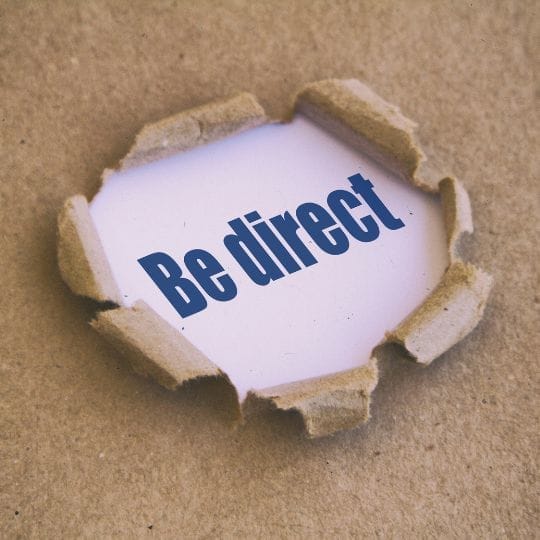
Events are a great way to promote your business and find new clients. Today, I’d like to share some tips and key insights from the Workplace Wellbeing Festival held on 21-22 June in Sydney. I was there to prospect and qualify new leads for Sage Womens Health – a company that helps menopausal women stay well and at work. By the end of this episode, you’ll have some great ideas on how to engage with leads and identify prospective clients at events.
If you’re going to attend an event or even have a booth at an event to find potential clients, it’s obviously essential that you choose the right event, so that it’s worth your time and money.
How do you choose the ‘right’ event?
Well, think about your niche, and within that, your high chemistry client which is the type of person who you really have great chemistry with, and ask yourself two questions:
Are they going to be at the event?
Why will they be there – what will they be seeking?
Here are two examples of events I’ve attended that have been really worthwhile:
Once you decide to attend or invest, think about your goals for the event.
For me at the WWF, we knew that around 3000 delegates attended last year. Four of us were manning a startup booth at the event, so we set goals to:
In other words, for the time, energy and preparation we put into planning for the event, we wanted to make sure it would be worth our while and meet our business goals.
These numbers are in progress at the time of this episode, but what I can tell you so far is that we secured 48 leads from around 50 conversations (a fair bit short of our goal), BUT we are on track for our 10 follow-up meetings with qualified customers.
Qualified customers mean they are aligned with what we do and are ready, willing and able to take the next steps with us.
Next up, planning for the event is critical so that you show up feeling prepared, looking professional and being polished.
Planning generally involves setting goals as I’ve just described, but also considering what you will do to stand out, be remembered, and engage the audience.
Some people at events use lollies or drinks to attract people, or branded pens or notepads to achieve these aims. Some people even had games at the WWF23!
We decided to get some cotton bags printed with our logo on them – because these will last almost forever and be used regularly. The branding will keep us front of mind when these people are out and about in daily life.

Anything like this – pens, notepads, fridge magnets, squeezy stress balls, annual calendars, mouse pads etc – can keep you front of mind after the event if you can afford it.
We also created a one-page marketing flyer with an outline of the problems our typical niche clients face in relation to menopausal women at work, and how our solution helps them in terms of services and outcomes. These were put in each bag along with a business card.
We also had the planning and logistics around printing, delivery of these materials, what to wear, and also, how our conversations would go and what our key messages were.
To get the messaging right, we discussed different conversations we’d had with the niche client and did some ‘social listening’ to see what topics were covered on social media. All of this helped us figure out what to say, and how to say it, when in front of our ideal clients.
When someone comes up to you at a booth they will naturally say something like ‘Hmmm, Sage Womens Health – tell me about what you do.’
The rookie mistake is to launch into your spiel. The better approach is to follow the Stephen Covey method “Seek First to Understand, Then to Be Understood.” In other words, flip it around and ask the person if you can ask them a few things about their business and needs, what’s working and current initiatives before you tell them about your business.
Bring all of your being and doing skills to the table. Listen actively, be warm, ask questions about them, be empathetic, reflect on what you heard and so on. All of these things build rapport, relationships and trust.
And their story helps you see if they are a fit for you or not, and also, helps you to identify their potential gaps and position your solution around those gaps.
You can hear in their tone of voice how engaged they are. You can tell by the specificity and depth of their story how important this issue is for them. You can hear the frustration, despair, or irritation when they recount the problems their business is facing, and the heartfelt compassion they have for their desired outcome.
Those are the people who you really want that follow-up meeting with. Anyone else is unlikely to be ready, willing and able to make changes – and that means they probably won’t buy from you. They can be invited to your mailing list instead or referred to someone else!
Once you have heard someone’s situation, you can position your business offering around that as long as it is within your normal range of services, of course!
The point here is not to waffle and have a long, convoluted spiel that will turn people off. Notice their body language as you outline what you do and how you could help. Are they engaged, or falling asleep, or turning away as if to escape?
The best way is to give an overview of how you work with people. For example:
“I like to start with a discovery call to get clear on your specific needs and see if we are a fit for working together. From there, if there is a need, we discuss program options to help you solve A, B and C to achieve X, Y and Z’ – where A, B and C are the problems or X, Y and Z outcomes they mentioned earlier in the conversation.
Then asking if you can connect with them and follow up for a discovery call is the next step!

They say that leads go cold within 72 hours – for events it might be up to 7 days before this happens. In either case, the message is clear – get on the messaging, email or phone to follow up as soon as possible after the event. Otherwise, your hard work goes down the drain.
Your follow-up message might mention your conversation (e.g. we met at X event and spoke about Y), and it might also invite them to a virtual coffee, a discovery call, or whatever it was that you mentioned as being the next step.
If the person doesn’t respond, give it 2 or 3 more goes. Cold selling usually results in a close after FIVE conversations, but an in-person follow-up might require only 3 or perhaps 4.
Events are a great way to get in front of a lot of people to showcase how you help people.
Today we discussed the importance of choosing the right event and setting goals, planning your approach, how your coaching skills help you engage, keep your offer simple and follow up right away. What is the next event you could attend and have an impact at?
Understanding who you are and what you need will allow your business to thrive! If you’re truly ready to break old habits and get out of the rut I encourage you to check out the Habitology membership.
Learn more here:
© 2024 Melanie White